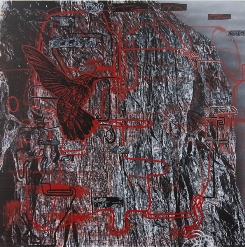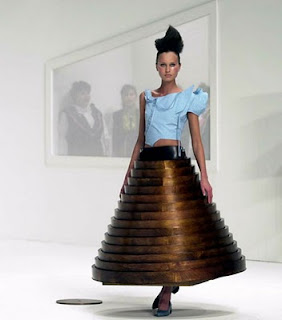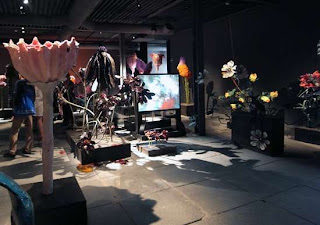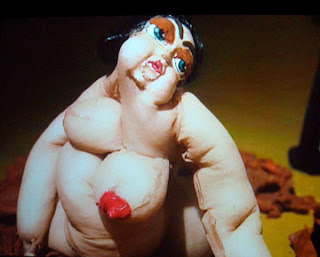Conceptual art is art in which the concept or idea involved in the work take precedence over traditional aesthetic and material concerns. In conceptual art the idea or concept is the most important aspect of the work. When an artist uses a conceptual form of art, it means that all of the planning and decisions are made beforehand and the execution is a perfunctory affair. The idea becomes a machine that makes the art. Relate to Kapoor's work it is a kind of conceptual art because his ideas goes wild and it was based on the concept nore than the real work. His one famous work Cloud Gate sculpture which can be linked to one Amercian Conceptual artist Sol LeWitt, he says:"A work of art my be understood as a conductor from the artists' mind to the viewers. But it may never reach the viewer, or it may never leave the artists' mind."
2. Research 3 quite different works by Kapoor from countries outside New Zealand to discuss the ideas behind the work. Include images of each work on your blog.
Sky Mirror
The sculpture is called "Sky Mirror," and it's essentially a large, convex piece of highly polished stainless steel, roughly in the shape of a contact lens. Minimalism came of age in the 1960s, and was displaced somewhat by postmodernism and conceptual art, though it never really went away. For the most part I tend to prefer more congenial, conversational art, but a number of Kapoor's pieces do something for me that Donald Judd's roomfuls of black cubes don't really do. Kapoor's best works clearly are social objects, even if they operate in the same general mode as minimalism does.
Anish Kapoor , Void 1991-92
Kapoor's sculpture is primarily concerned with metaphysical dualities: the play of opposing concepts such as presence and absence, inside and outside, light and dark.
In Void 1991-92, Kapoor has covered a deep concave shape with a dense blue pigment. The blue is highly evocative and has spiritual meaning in both Hindu and Christian beliefs.
Projecting outward into space and simultaneously drawing the viewer in, it is a work that invites the viewer to contemplate its dark interior while remaining aware of its overall form. With sustained viewing, the play of inside and outside generates a profound optical effect.
Ishi's Light 2003, Anish Kapoor
Ishi’s Light is over three metres tall and two and a half metres in diameter at its widest part. The light entering the structure creates a strip of brightness that looks as if you can almost touch it. The wide opening in its egg-shaped shell invites you to step into its glossy, deep red interior, and on accepting the invitation you can lose yourself in the highly-polished reflective surface. Visually and aurally immersive, it gives you both the disorientating feeling of being between different realms, and a comforting enveloping security.
Anish Kapoor explains: ‘As you’re entering the work, the column of light is like a virtual object, it’s a physical object. It isn’t simply on the surface. I think something is occurring there with the reflections, which is what is important to me.’
3.Discuss the large scale 'site specific' work that has been installed on a private site in New Zealand.
Site-specific art is artwork created to exist in a certain place. Typically, the artist takes the location into account while planning and creating the artwork.
Kapoor created two new works: a large site-specific work entitled ‘The Dismemberment of Jeanne d’Arc’ and a performance based installation entitled ‘Imagined Monochrome’. The public response was so overwhelming that police had to re-divert traffic around C Curve at the Chattri and exercise crowd control.
Kapoor has also completed the massive Dismemberment Site 1, installed in New Zealand on the private "art park" known as "The Farm" and owned by New Zealand businessman and art patron Alan Gibbs.
4. Where is the Kapoor's work in New Zealand? What are its form and materials? What are the ideas behind the work?
Anish Kapoor. Dismemberment Site 1
Created in New Zealand, Dismemberment Site I is explicitly Land Art, as underscored by its title and the term "site". Its anchoring in the landscape is both spectacular and supernatural; will the artwork "dismembers" the hill to appear as a shape oscillating between fleshless muscle and ancestral trumpet. As is often the case with Anish Kapoor, it is also a "passage work", giving the singular impression we can enter it to discover an unknown "elsewhere".
5. Comment on which work by Kapoor is your favourite, and explain why. Are you personally attracted more by the ideas or the aesthetics of the work?
Cabachon trilliant tourmaline and facetted pink garnet 18k white gold ring
This white gold ring which is my favourite, This ring was inspired by the cabachon trilliant tourmaline. Its opposite side is the inverse, textured, recessed, dirty, like a dish of frogs spawn. Anish Kapoor does these dishes very well, they’re always very sensual and sometimes quite sexual. I do appreciated his amazing conceptual art and ideas, due to his wild imagination we can see and know this person very well with deep enjoy his work.
Reference:
http://www.robgarrettcfa.com/thefarm.htm
http://www.billslater.com/cloudgate/
http://www.billslater.com/cloudgate/

























